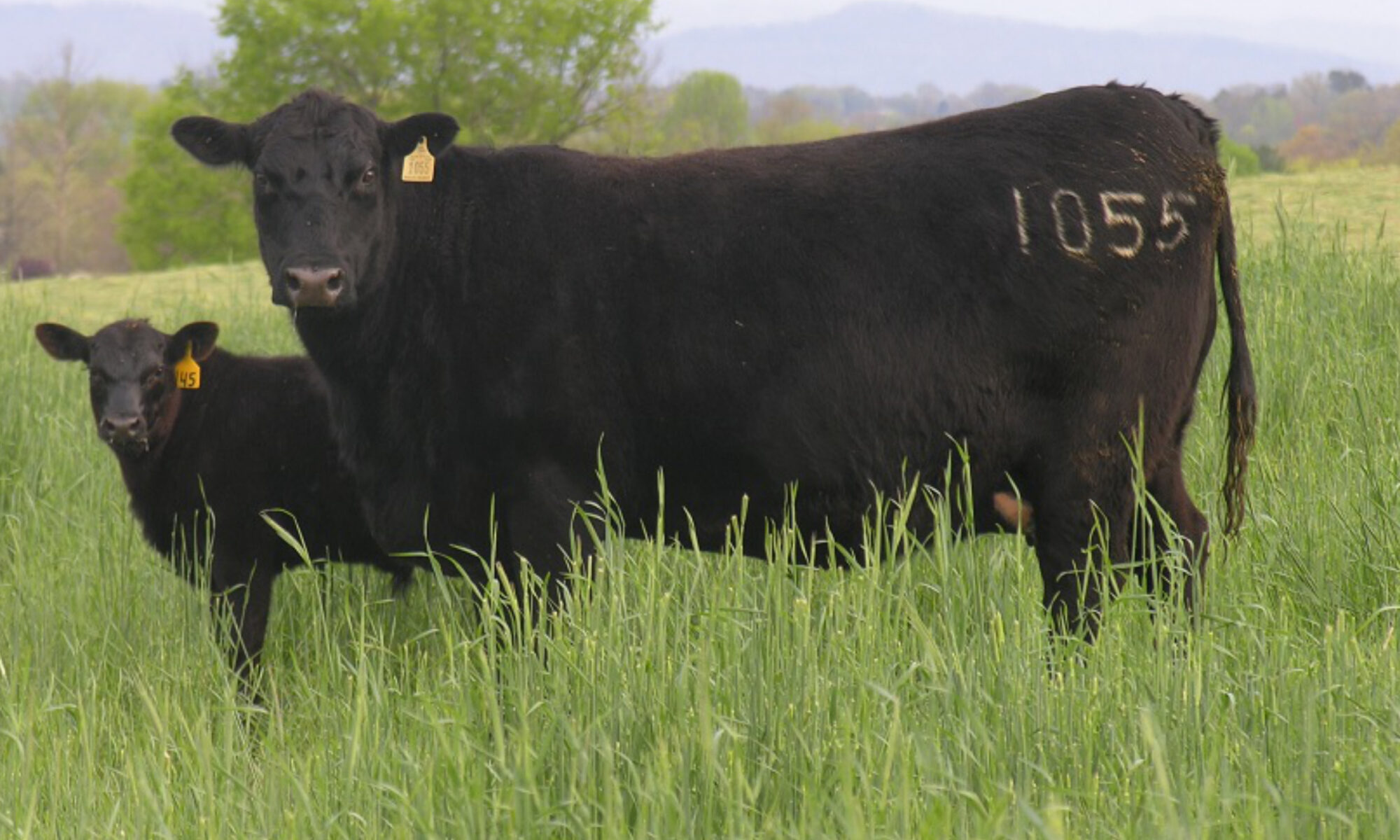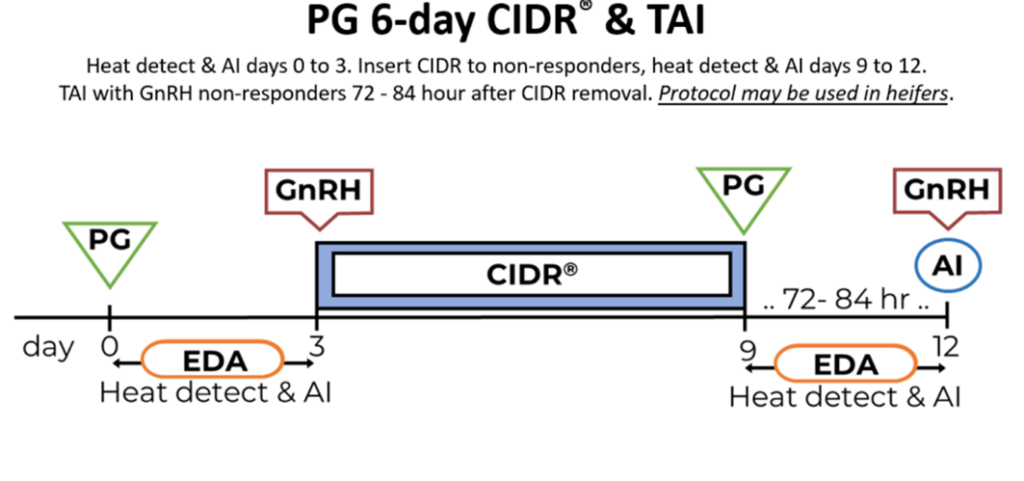

Dr. Saulo Zoca
Assistant Professor and Beef Cattle Reproduction Specialist
Department of Animal Science
P: 931-486-2129
Co-authored by Adella Lonas, Graduate Research Assistant
The fall breeding season is coming up and having a plan in place is very important. Reproductive efficiency has a huge impact on the operation’s success, profitability, and long-term sustainability. In fixed-time artificial insemination (TAI) protocols, when females exhibit behavioral estrus, they have a greater probability of getting pregnant than those females that did not respond to the TAI and were induced to ovulate with a GnRH. More specifically, Richardson and others (2016), in a meta-analysis of 22 studies and over 10,000 inseminations reported a 27% increase in pregnancy rates for those females that had being detected in estrus compared to females not detected in estrus. Recent studies have demonstrated that combining TAI protocols with pre-synchronization provides greater expression of behavioral estrus and improved pregnancy results (Andersen et al., 2021; Ketchum et al., 2022; Mercadante et al., 2021). Two AI protocols that involve pre-synchronization are the 7 & 7 Synch and the PG 6-day CIDR & TAI. Pre-synchronization is beneficial in both protocols, and here are some examples of those benefits:
Improved Estrus Synchronization & Pregnancy Rates
Pre-synchronization protocols help align the estrous cycles of a group of females. This can help ensure that the individuals in the group are all at a similar stage in their cycle when artificially inseminated. If more females, either heifers or cows, are at a similar stage in their cycle, then a greater conception rate can be expected. Research has demonstrated that pregnancy rates increased with the 7 & 7 Synch protocol when compared to 7-day CO-Synch + CIDR protocol (Andersen et al., 2021). The 7 & 7 Synch involves a pre-synchronization with an injection of prostaglandin (PG) and a CIDR for 7 days while the 7-day CO-Synch + CIDR protocol does not have a pre-synchronization. Other studies have reported that the 7 & 7 Synch protocol when compared to the PG 6-day CIDR & TAI protocol resulted in similar pregnancy rates despite increased expression of behavioral estrus in the 7&7 protocol (Ketchum et al., 2022). Difference between 7 & 7 synch and PG 6-day CIDR & TAI are explained below.
Reduction in Labor
When utilizing estrus detection and AI, if a larger group of females are in a similar stage of their cycle, then more individuals will be ready for AI around the same time. This reduces the need for repeated processes, which can minimize stress for the cattle and farm staff.
Better Control of Calving Intervals
Pre-synchronization protocols can reduce the number of days that a cow is open, or not pregnant. It is important that cows or heifers become pregnant early in the breeding season (within the first 21-days), this allows for a tighter calving interval within the herd and a condensed calving season. A tighter calving interval will result in easier management of the calving season, better use of resources, and more uniform calf crops. Also, heifers that calved within the first 21-days of their first calving season, on average stay an extra year in the herd. Further, calving early as a heifer was associated with increased weaning weight of calves when compared to late calvers, not only on their first calving season but up to their 6th calf (Cushman et al., 2013).
Overall, using a pre-synchronization protocol in conjunction with artificial insemination can increase conception rates, improve calf uniformity, and decrease labor used to achieve these goals. Regardless of method of pre-synchronization, it has been demonstrated to be a great tool in the toolbox to improve beef cattle efficiency, profitability, and sustainability.
Here are two estrus synchronization protocols that use a pre-synchronization (these and other synchronization protocols for beef females can be found at beefrepro.org):

7 & 7 Synch
The 7 & 7 Synch involves inserting a CIDR and administering PG on day 0, on day 7 females should receive an injection of GnRH, and on day 14 the CIDR should be removed with another dose of PG administered. Fixed-time AI should be performed 66 +/- 2 hours in cows, while heifers should be AI’ed 54 +/- 2 hours after the CIDR is removed with an administration of GnRH at time of AI for both cows and heifers. (Image from beefrepro.org)

PG 6-day CIDR & TAI
For the PG 6-day CIDR & TAI, on day 0, females receive an injection of prostaglandin. There is evidence of economic benefits of using heat detection between PG and CIDR insertion; however, this procedure is not required. Females that exhibit behavioral estrus prior to CIDR insertion have good response if the protocol is followed without early AI. On day 3, a CIDR is inserted, and GnRH is administered in all females that have not been AI’ed. Females that are AI’ed between day 0 and 3 should not follow the remainder of the protocol. On day 9, the CIDR is removed, and prostaglandin is administered to all females that received a CIDR. One might choose to perform estrus detection followed by AI or only TAI. If one is performing estrus detection, TAI is recommended at 72 to 84 hours post CIDR removal for those that did not exhibit behavioral estrus with a GnRH injection at time of AI (females that were detected in estrus do not need an injection of GnRH). It is possible to perform TAI without estrus detection with this protocol, in this case TAI should be performed 63 +/- 3 hours in cows, while heifers should be AI’ed 54 +/- 2 hours after the CIDR being removed with an administration of GnRH at time of AI. (Image from beefrepro.org)
